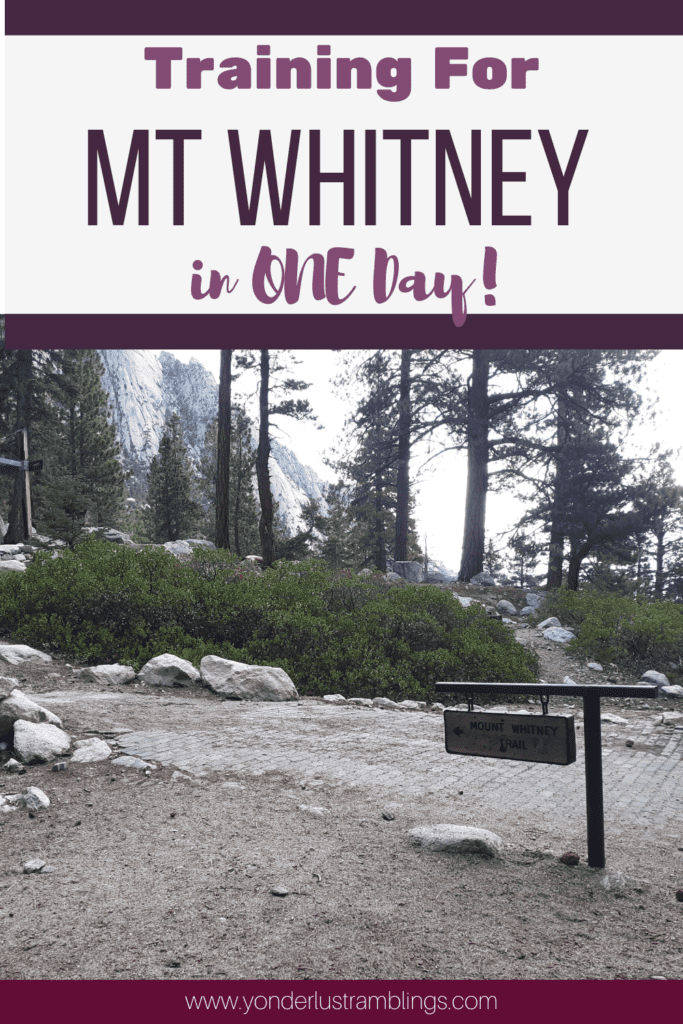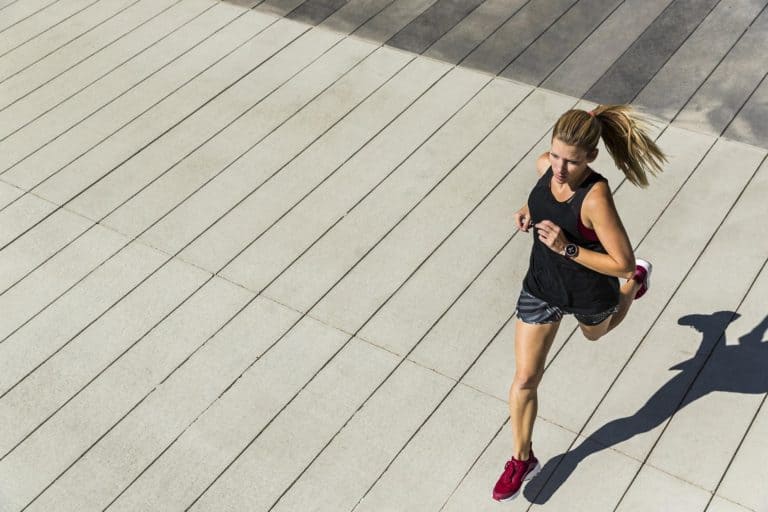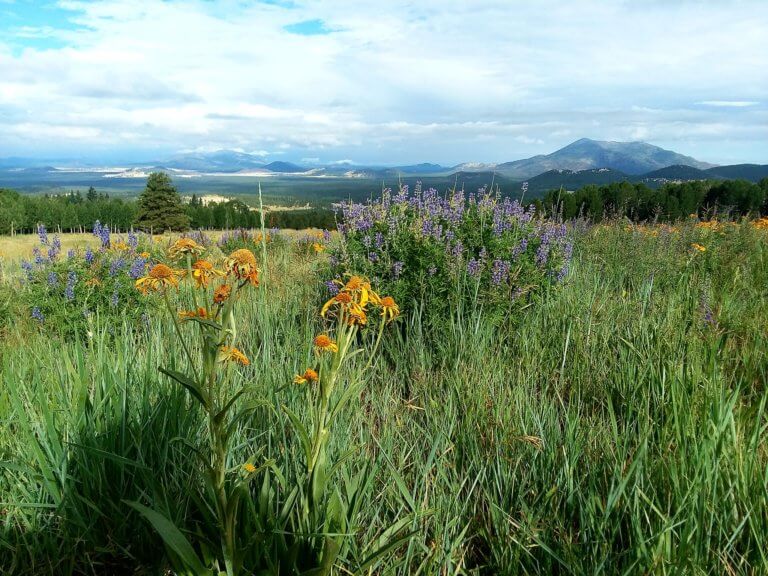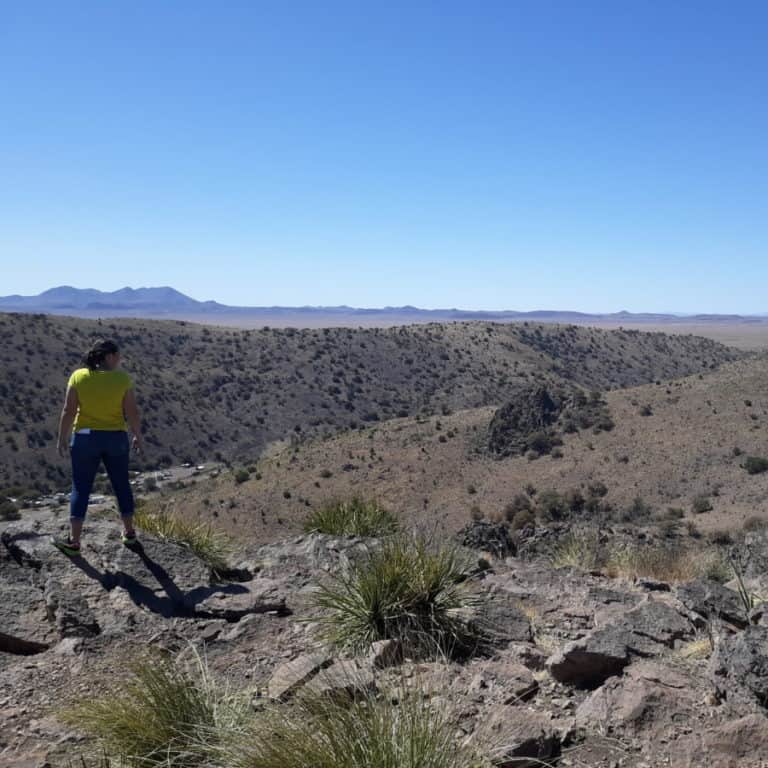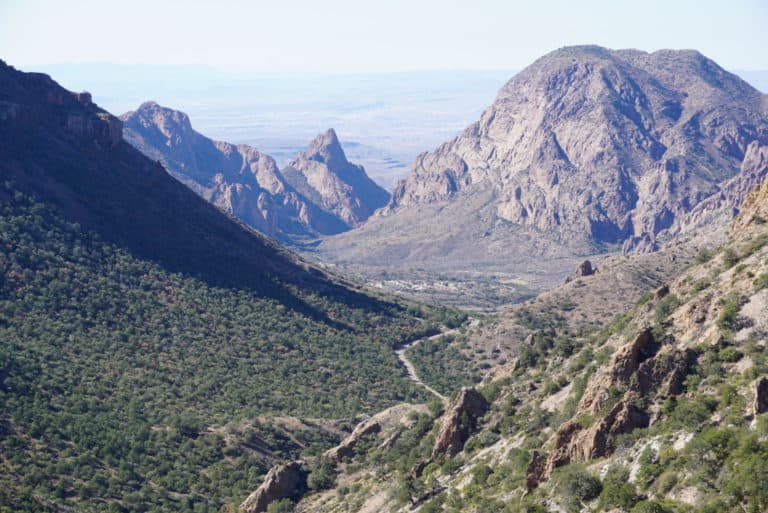Training for Mt Whitney: How to Prepare for 21 Miles in One Day
There are many reasons people are drawn to hiking Mt Whitney! It’s the highest point in not only the state of California, but also the lower 48 states! It towers over iconic state landmarks like Sequoia National Park and the Sierras, and it offers the ultimate bragging rights for hikers as one of the toughest hikes in the United States! Mt Whitney is a formidable opponent at over 14,000 feet in height, over 6,600 feet in elevation gain, and consisting of a whopping 21 miles roundtrip! Add on to that impressive resume alpine weather and elements, high altitude, and challenging terrain, and you can see why Mt Whitney is such a feat! Whichever reasons brought you to the start of your Mt Whitney journey, it is imperative to know that when it comes to hiking Mt Whitney, you don’t just wing it! Besides navigating the annual Mt Whitney lottery process successfully, building a Mt Whitney gear list, and fully familiarizing yourself with the details of the Mt Whitney Trail, the other critical and obvious factor includes training for Mt Whitney and its 21 miles in ONE day! I live in one of the flattest parts of the country in central Texas, and I am here to tell you that anyone with enough intentionality, commitment, and creativity can successfully conquer Mt Whitney in one day! If you are looking for a simple, straightforward training plan for how to prepare to climb Mt Whitney, you’re in the right place!
Disclosure: Below are some affiliate links-these are all products I highly recommend. I won’t make any recommendations on this page that I haven’t tested or personally used! Enjoy this guide to training for Mt Whitney!
Table of Contents
Training for Mt Whitney in One Day
Before getting into the specifics of training for Mt Whitney, you need to have a foundation, and you need to understand and know what your body is capable of NOW. Training for Mt Whitney involves knowing what your body is capable of, and what you can ask of it, BEFOREHAND!
Steps To Create a Mt Whitney Training Plan
So how do you build the right framework to prepare to climb Mt Whitney in one day?
First, you need to establish a hiking foundation.
Your ultimate goal before attempting to climb Mt Whitney in one day should be:
- being able to comfortably complete a handful of long distance hikes that are 15+ miles in length
- include a healthy dose of elevation gain on as many of those hikes as possible
- include high altitude on as many of those hikes as possible
- be able to complete those hikes with sustained, consistent, and comfortable output at a moderate level
So how do you get there?
- #1:Gradually
- #2: Intentionally
- #3: With Cross Training
- #4: With Rest
Before we get into the details of developing a training plan for Mt Whitney, let’s talk about your current hiking foundation and cross training. I have always been acutely aware and very grateful for how much my background and cross training has benefited me. As a long distance runner, I can see how running has helped my hiking game. As a cyclist, I can see how biking has benefited my running. And as a hiker, I can see how hiking has benefited my running and cycling. They are all interlinked, and all play off of each other. But ultimately, decades ago, I started as a runner. And I took that foundation and built on it.
If you have a foundation, build on it. If you run, you already have a segway into hiking long distances because you understand consistent, sustained, output and pacing. If you cycle, you understand power, awareness, and stamina. If you are a day hiker or shorter distance hiker, then you understand navigating trail conditions and terrain. Take stock of where you are NOW and what you can build off of. Once you have that skeleton in place, you can start filling in the muscles.
The muscles of your training plan need to be primarily targeted at long distance hiking, naturally. If you are active in any other way or form, whether its running, weight lifting, cycling, kickboxing, etc., continue to work that into a weekly regimen, as cross training is so enormously beneficial. You will see this noted on my training calendar below. At the same time, start focusing more of your energy on building up your hiking stamina and pace gradually and intentionally.
As a long distance runner, hiker, and cyclist, I learned early on that the most important thing you can do when training for any big physical feat is to BE INTENTIONAL!!! It is literally the most important thing I can say as far as sticking with any training regimen. You will see this rule plastered on all my long distance training guides, from my 16 week half marathon training plan, to my long distance cycling training plan. So if you are training for Mt Whitney in one day, go ahead and grab a calendar! Be intentional. Get ready to literally write down the days you are planning to do your practice hikes for the next 4 months. If you tell yourself you will do them “when you have time”, you are less likely to do it. Set aside the time now, in writing, and your other obligations have a way of working with and around your scheduled training.
How far out do you need to start training for Mt Whitney? The answer to that depends on what your starting foundation is. Much like training for any other long distance hike, run, or cycling race, intentional and gradual INCREMENTS are key. Please, do not go from your longest hike being 5 miles, to deciding to try a 16 mile hike with no increments in between!
Working off of your current hiking foundation, I recommend continuing gradual weekly increments, between 1 and 2 additional miles per week, until you are able to comfortably hike a minimum of 15 miles in one day. And if possible, I would do several long practice hikes at each increment. Here’s a quick glimpse of what this might look like:
Current Hiking Foundation – 3 miles per week
Week 1: 3 mile hike
Week 2: 3 mile hike
Week 3: 4 mile hike
Week 4: 5 mile hike
Week 5: 5 mile hike
Week 6: 6 mile hike
and so on…..until you reach 15+ miles comfortably. Check out this sample 16 week training calendar below, based on someone with a hiking foundation of 5 miles!
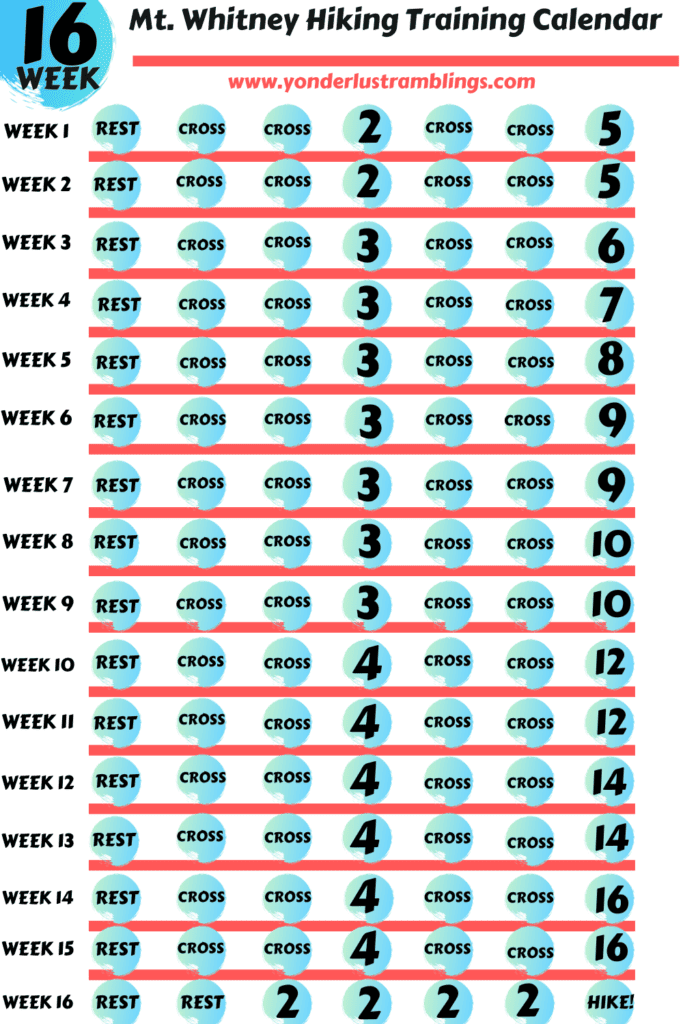
*Download this example 16 Week Mt. Whitney Hiking Training Calendar HERE!
*Important Things to Note About this Example Training Calendar Above:
- Assess where you are currently at based on experience, age, physical fitness, etc. Not every training calendar will be exactly right for you just as it is.
- It assumes a regular hiking foundation of 5 sustained miles. If you aren’t there yet, you need to give yourself more time beforehand to develop that foundation.
- If this progression seems too quick, then allow for more time, possibly 20 or 24 weeks. Be comfortable with your increments.
- The rest and cross training days are just as important as training hikes.
- It is ok to adjust, take a day off, add an extra rest day, etc. It is important to listen to your body, while remaining intentional.
*Want professional coaching and support to help develop your own INDIVIDUALIZED Mt. Whitney training calendar like the one you see above? Let me help you create your OWN plan for success with tailored cross training, incremental long hikes, and practice hikes built in that work for YOU! I’ll assess where you are today, and build you a plan to get you where you need to be! Get started HERE!
As you can see, there is a reason that people sometimes train for Mt Whitney for a year or two. I myself have a healthy background of challenging, long distance, and high altitude hikes, like the Grand Canyon’s Rim to Rim hike. But I still trained for Mt Whitney for 10 months altogether the 1st time I hiked it.
The reason is that Mt Whitney, or any wilderness hike, should not be underestimated. You can not afford to make assumptions or be underprepared in any way, and training for Mt Whitney should be taken seriously. The bragging rights for conquering this peak do not come easy as you can see, but it is so worth it! But you need to be committed to months of training and preparation beforehand.
So once you have started establishing your foundation and building up your hiking distance increments, it is time to focus on your actual hiking style and performance. Hiking Mt Whitney in one day means that you need to develop a moderate pace on the healthy side of quick, in order to be starting and finishing that 21 mile hike within daylight hours. That is not to say you can’t or shouldn’t take breaks while you hike Mt Whitney, but you also may find yourself in a higher stress situation if your hiking pace is 1 mile an hour.
So as you build up your hiking stamina and endurance with your training hikes, start to focus on your pace. Start to learn how much output your body is capable of giving consistently at what pace. Start to gauge when your body actually requires a break. Start to learn your hiking pace and how much your body can consistently and healthily give over an extended period of time, and be able to maintain. As you hike, try to give it as much energy as you can maintain consistently. Hiking Mt Whitney is by no means a sprint, but see if you can get your hiking pace up to 2.5 – 3 miles an hour, for example. See how long you are able to maintain that pace. Try to take as few breaks as necessary, to gauge where you stand pace wise.
As you are getting to learn your hiking performance and building your hiking foundation, that is the ideal time to also start paying attention to 2 other important aspects of training for Mt Whitney: proper fueling and investing in proper gear.
While you are conducting your long training hikes, start assimilating a “menu” of what “fuels” seem to work best for you. Not only that, start to answer these questions:
- Do you benefit the most from a big meal the night before a morning hike?
- What types of “big meals” give you the most energy the next day? (Think healthy carbs and lean proteins)
- Do you benefit most from a large meal an hour before? (There are some hikers this is true for!)
- Do you benefit most from multiple small snackings leading up to a big hike?
- Which hiking snacks do you prefer / give you the most energy while on the trail?
- Which hiking snacks are the most digestible for you while hiking?
- Which hiking snacks or foods do NOT agree with you before, during, or after hiking?
- Which hiking snacks or foods “motivate” you the most?
- How quickly do you prefer to refuel after a hike?
- Which foods or snacks settle with your stomach the best post hike?
It is important to have questions like these figured out before the morning of the Mt Whitney hike.
For me, I have also done best with healthy carb loading a week prior, then a big dinner the night before, and a moderate breakfast about an hour prior to hiking. I even have it narrowed down to exactly what foods help me perform best. I have a helpful guide to the best foods for long distance runners, and the concepts apply equally to long distance hikers. Knowing what foods give you the most performance return in advance, will also help you when it comes time to pack the snacks you will bring along with you on the Mt Whitney Trail.
Collecting an inventory of gear necessary for Mt Whitney also takes time, so if you are committed to doing this hike, then start investing in all the necessary Mt Whitney gear while you are in the process of training. Jump over to this post on all the Mt Whitney gear you will need, and you can even grab a downloadable Mt. Whitney Gear Checklist HERE!
So before, I mentioned that it is imperative to have a handful of 15 + mile practice hikes under your belt before attempting Mt Whitney. I felt now would be a good time to share a few practice hikes I did to ensure I was ready for Mt Whitney. In the year leading up to hiking Mt Whitney in one day, here are a few of the trails I completed, in addition to my regular weekly training hikes at my local park, to give an idea.
- The 24 mile long Rim to Rim hike in the Grand Canyon. This hike has the elevation gain and the length, though it does not have the high altitude. Still, it was invaluable to me in giving me a gauge on my hiking pace, and where I stood in being able to push through for an extended amount of hours. Though it does not have the high altitude of a 14’er, it does have the heat, and that still provided good conditioning for elements.
- The 16.7 mile long hike to Mt Marcy in New York’s Adirondacks. Very tough terrain to navigate in a rocky ravine, and a healthy dose of long distance mileage. Gave me good practice in handling tricky terrain while keeping up pace.
- Guadalupe Mountains’ McKittrick Canyon Trail. 20 miles of good pacing and output practice, but not high altitude. Though the 4,300 feet in elevation gain is a challenge! While you are there, don’t miss out on a handful of other amazing outdoor adventures in Guadalupe Mountains National Park, like the hike to Texas’s state high point at Guadalupe Peak!
- Mt Elbert in Colorado, the state’s highest point, highest 14’er, and tallest peak in the Rockies. At 8 miles, this trail is not the type of long distance I usually practiced on, but it did give me great exposure learning how I handled high altitude and how to gauge my response and preparation in the future.
- Boundary Peak in Nevada, another state high point. This trek clocked in at about 10 miles, and gave me good experience with dicey terrain, a healthy amount of distance, and high altitude training. Plus, in my quest to reach the 50 U.S. state high points, with Boundary Peak and Mt. Whitney being neighboring states, it made sense to do them back to back.
- The iconic Appalachian Trail terminus at Mt Katahdin. Not only is this a beloved hike on a beloved national treasure, but it provided another great long distance practice hike at 10.6 miles!
- The highest point east of the Mississippi heralds from Mt Mitchell, North Carolina. 12 miles of steady and aggressive uphill, with almost zero breaks, was a great long distance warm up for Mt Whitney.
- Another Appalachian Trail favorite (and one of my top 3 favorite hikes of all time), took place at gorgeous Grayson Highlands State Park! I hiked just short of 11 miles amongst the wild ponies and billowy cloud drifts here in the “highlands” of Virginia on the Mount Rogers Trail!
- I got a good taste of technical climbing when I took on the iconic Mt Hood climb in Oregon! Mt Hood is an 11’er, so not considered amongst the highest alpine peaks, but it is still a good taste of altitude training and preparation. The skills and patience involved in climbing Mt Hood helped prepare my mental fortitude more than anything else prior to hiking Mt Whitney, and that was invaluable mental preparation. Your mental game has to be on point when training for Mt Whitney and while hiking it.
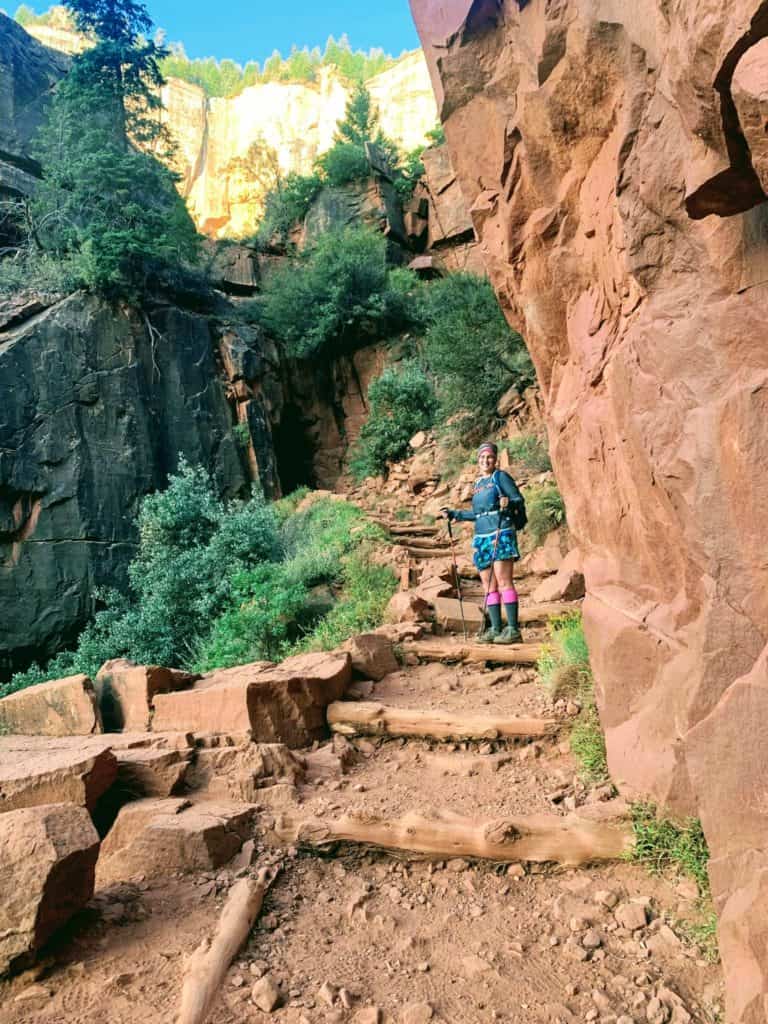
These are just a sampling of the types of hikes I did the year prior to training for Mt Whitney and hiking Mt Whitney in one day. As a local Texan, I had to do a decent amount of traveling to get the kind of exposure that I was looking for. But I also did weekly training hikes at my own local park, by doing loops on a trail that was a couple miles in length with about 500 feet in elevation gain. I simply did loops on that humble local trail until I got my elevation gain up into the couple thousands, and my distance between 10 – 15 miles regularly.
Training During The Days Leading Up to Mt Whitney
How you prepare for the months leading up to Mt Whitney, and how you prepare during the days leading up to Mt Whitney are different! Before even stepping foot on the Mt Whitney Trail, the first step starts back in February, when the annual Mt Whitney permit lottery takes place. You can NOT hike Mt Whitney as either a day hike or an overnight hike without winning a permit.
*This post will be very useful in helping you successfully navigate the process of applying for and securing a permit for hiking Mt Whitney.
Once you have your permit (which unfortunately is not guaranteed, but read the above post to understand why), you are ready to talk about what those days before hiking Mt Whitney should look like!
Those days before hiking Mt Whitney need to revolve around one important question – how acclimated are you? You should be fully trained by then, if you followed a training calendar like the one above. The primary goal of the days before hiking Mt Whitney should be acclimation. How much depends on how prepared your body already is or already isn’t.
If you are coming from somewhere like Colorado and a typical weekend hike for you is at 14’000 feet, then you aren’t going to need much time to acclimate before hiking Mt Whitney. If, on the other hand, you are like me and coming as a “flatlander” from Texas, then those days prior to Mt Whitney are crucial to acclimation and a safe and successful summit of Mt Whitney.
Let’s assume you are a beginner reading this post about training for Mt Whitney. Let’s assume you want to do everything you can to have a safe and successful summit. Even with a healthy background in hiking, I was this way, and Mt Whitney was nonetheless a formidable challenge.
I know vacation days are limited, and it is sometimes hard to get days off, but if you are training for Mt Whitney and getting ready for your hike, try to not only devote time for the day of the hike itself, but also to the couple days before. If you know that you are someone that needs to prepare themself for the altitude, then I would highly, highly recommend a minimum of 2 days prior to actually hiking Mt Whitney to acclimate on other high altitude practice hikes.
3 days is even better.
4 days is what I personally aim for myself.
Meaning that the whole Mt Whitney hiking process took 5 days for me. 4 days of easy practice hikes at high elevation before the Mt Whitney hike = a successful completion on day 5. You can see an example of what this looks like below.

Whether you can afford to get in 4 days early or 2 days early, devote that time to acclimating! And in case you are wondering where to go to acclimate, I have some great suggestions local to Mt Whitney!
The closest town to Mt Whitney is Lone Pine, California. I find this town very endearing for its old west roots and small town feel. For a small town, it also packs in a lot to see and do, which makes spending a few days here easy. There’s the fascinating and alien-esque Alabama Hills, a handful of small local museums, the Manzanar National Historic Site and its sobering testament to history, and a plethora of exhilarating local hikes. You can find local restaurants and a couple small lodging establishments in addition to a couple of vacation rentals. There are also several campgrounds at the entrance to Whitney Portal, but they fill up way in advance. These are 3 popular ones, in order of closest to the Mt Whitney Trailhead.
You can make a reservation for one of these campgrounds at Recreation.gov.
Map of local practice hikes for training for Mt Whitney the days before the big hike!
The best thing about Lone Pine is you can literally take one road from its downtown all the way to Whitney Portal and the Mt Whitney Trailhead. It also puts you in a prime spot to take advantage of a couple great acclimating hikes that are very close by. Here’s just a few:
- Mono Pass: if I didn’t absolutely love Mt Whitney itself, this hike would have been an easy favorite in the area. It is located near Bishop, California, about 1 hour and 30 minutes from Mt. Whitney. Arguably one of the most visually stunning and breathtaking vistas I have ever personally encountered. Mono Pass also happens to be the highest trailhead in the Sierras that is accessible by car. The handful of trails that snake around Mono Pass all start out right around 10,000 feet. Spend a day or a couple here. Aim to spend a couple hours / couple miles hiking at this altitude each day that you are able to spend here. Specifically, I hiked the Mono Pass from Mosquito Flat Trailhead, which is 8.7 miles in length with 2,000 feet of elevation gain. Since not over-exerting yourself is important at this point, I only did 3 miles of this total trail.
- Horseshoe Meadow Loop/Golden Trout Wilderness/Cottonwood Lake: This cluster of trails also contains a handful of high altitude hikes that begin in the 9,000 foot range for their respective trailheads. The somewhat dicey and curvy mountain road up actually passes the several campgrounds at the entrance to the Whitney Portal, as well as the entrance to the Mt Whitney Trailhead and parking area. Specifically I hiked Trail Pass and Cottonwood Lakes Trails. Again, spend a couple hours / couple miles hiking here each day that you are able.
- The Mt Whitney Trail: unbeknownst to many, you can actually hike PART of the Mt Whitney Trail without a permit. The first 3 miles from the trailhead to Lone Pine Lake are able to be hiked without a permit, and the advantage of doing an acclimation hike here is first, getting to scope out the “land”, and second, getting to take your time enjoying the scenery and the trail itself without worrying about pace! For me, it was also fun to be able to bring along my mother to show her the trail I would be hiking solo later! These first 3 miles will also expose you to the type of grade to expect, and starts off at about 8,200 feet.
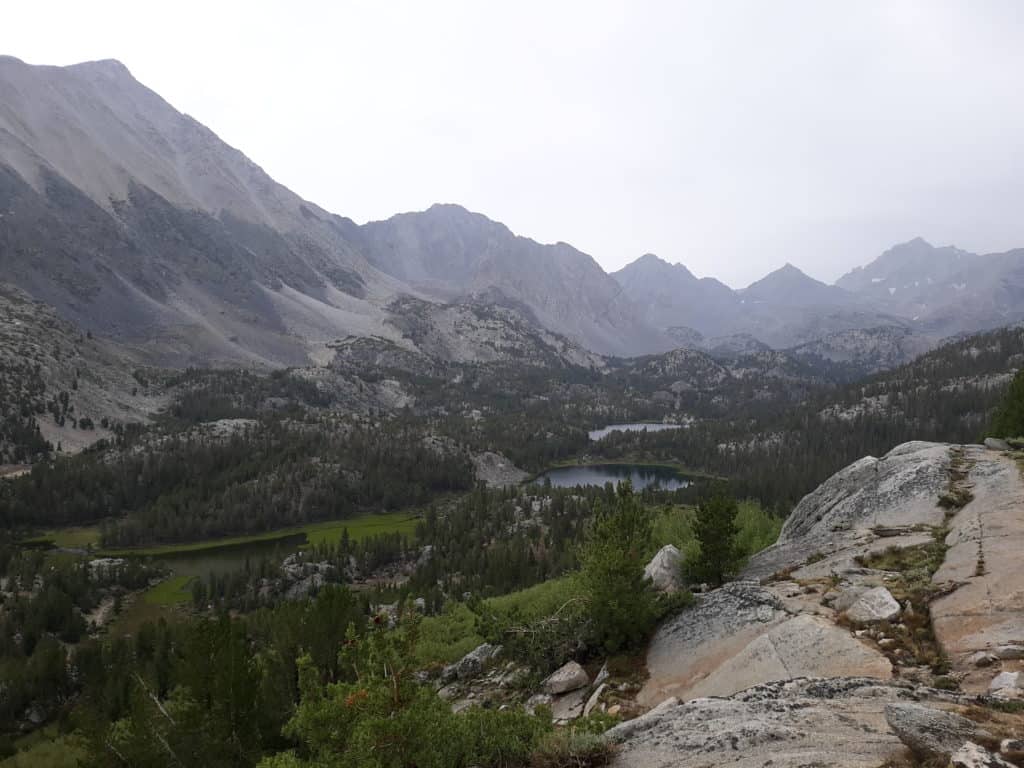
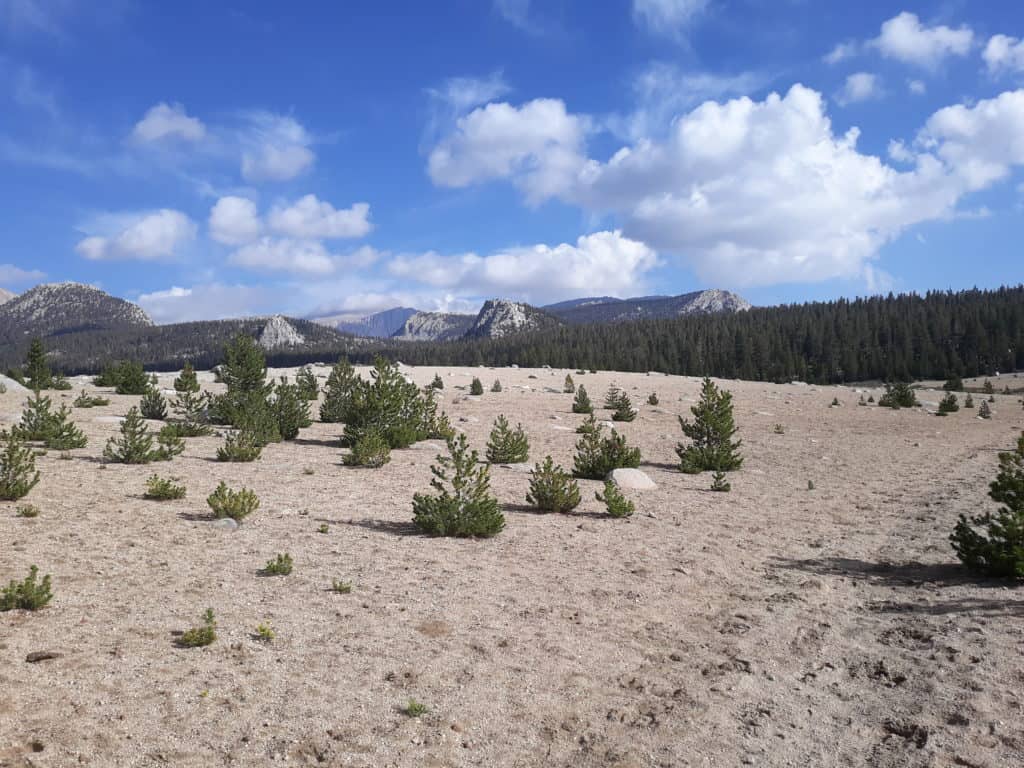
The main theme with warm up hikes is to acclimate, to spend a couple hours hiking a couple miles each day, for as many days as you can before the big hike. If you really want to top it off, have some picnics and just hang out anywhere you can with higher elevation. The more exposure the better acclimated you will be. This will help you immensely with handling that particular element on Mt Whitney. The goal is NOT to over-exert yourself with these hikes, so nothing too steep, and nothing too aggressive. Just warm up at an easy pace for 2-3 miles. No 11 mile hikes here the day before you hike Mt Whitney!
So that covers a detailed plan for how to go about training for Mt Whitney in one day! If you are curious for additional resources, like what exercises you can do to help prepare for challenging hiking, I’ve got you covered there as well! I am a true “flatlander” from Texas, so in addition to the regular practice hikes I did locally each week, and the destination hikes I did across and outside of Texas, I also maintained a thorough regimen of cross training and exercises I could do right from my own home that help prepare me for challenging hiking.
HIIT workout routines are a great, and simple way, to get in some additional practice right from home. These HIIT routines help fine tune all systems of the body, so that they are all working harmoniously together in sync. I’ve got pre-filled HIIT routines, or even a downloadable template you can grab to create your own individualized HIIT workout routine! Check out this post that goes over all things HIIT! HIIT workouts will benefit you in more ways than just hiking!
If you need ideas for cross training, here’s a few that I use and intermix weekly: cycling, walking, trail running, kayaking, Pilates, yoga, and HIIT home workouts.
The Day Before Hiking Mt Whitney
The last part of training for Mt Whitney comes the day and night before hiking it. On the day prior to hiking Mt Whitney, go for a short, easy hike, like the first couple miles of the Mt Whitney Trail, the portion that doesn’t require a permit. Spend a couple hours at altitude if you can. Do some stretches and loosen up. Eat the foods you know have worked for you in the past before a big hike. For me, it’s a good old fashioned burger and fries the night before. Rest, and do not overexert yourself or put too many steps on your feet.
Lay out all your clothes and gear. Check them, make sure they work, and pack them. Lay out the foods you plan to eat for breakfast. Make sure you have your permit ready. Hydrate, hydrate, hydrate. And finally, go to bed early, because you’ll be waking up early.
Summiting Mt Whitney will be one of the most memorable moments and one of the most rewarding challenges you will ever undertake! There are some hikes I swear I’ll never do again, and then there are hikes you start dreaming about doing again the moment you finish. Mt. Whitney was one of the latter ones 🙂 Enjoy a burger from the Mt Whitney Store at the trailhead afterwards, and savor not only the accomplishment, but the entire journey that it took to get there!
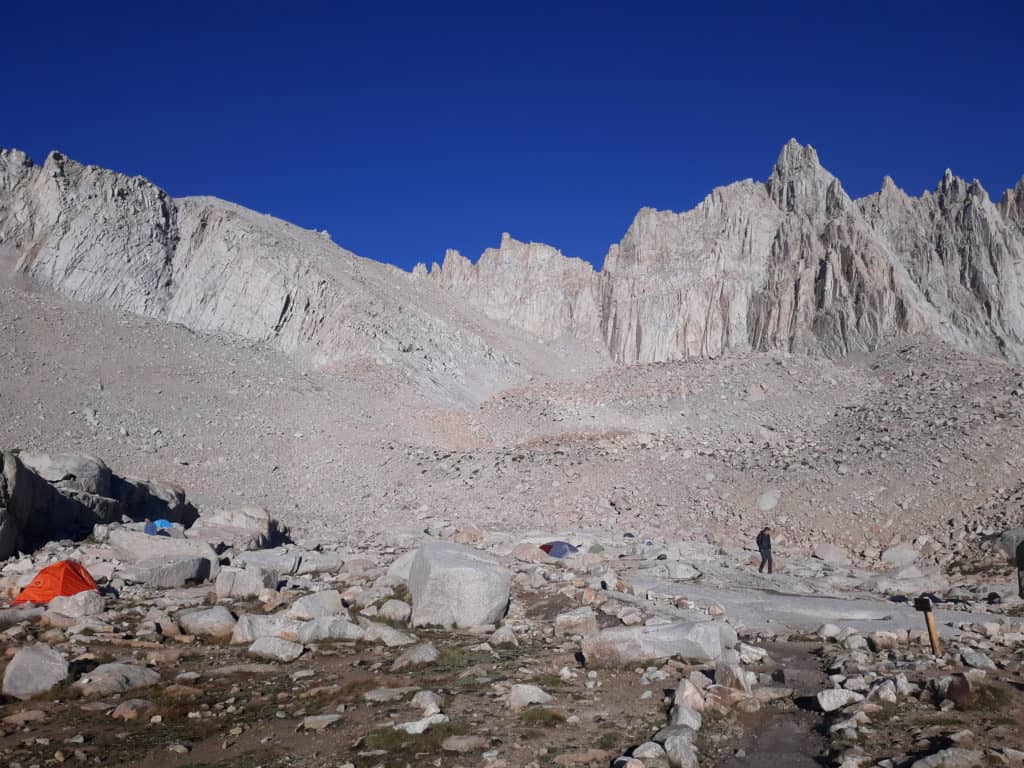
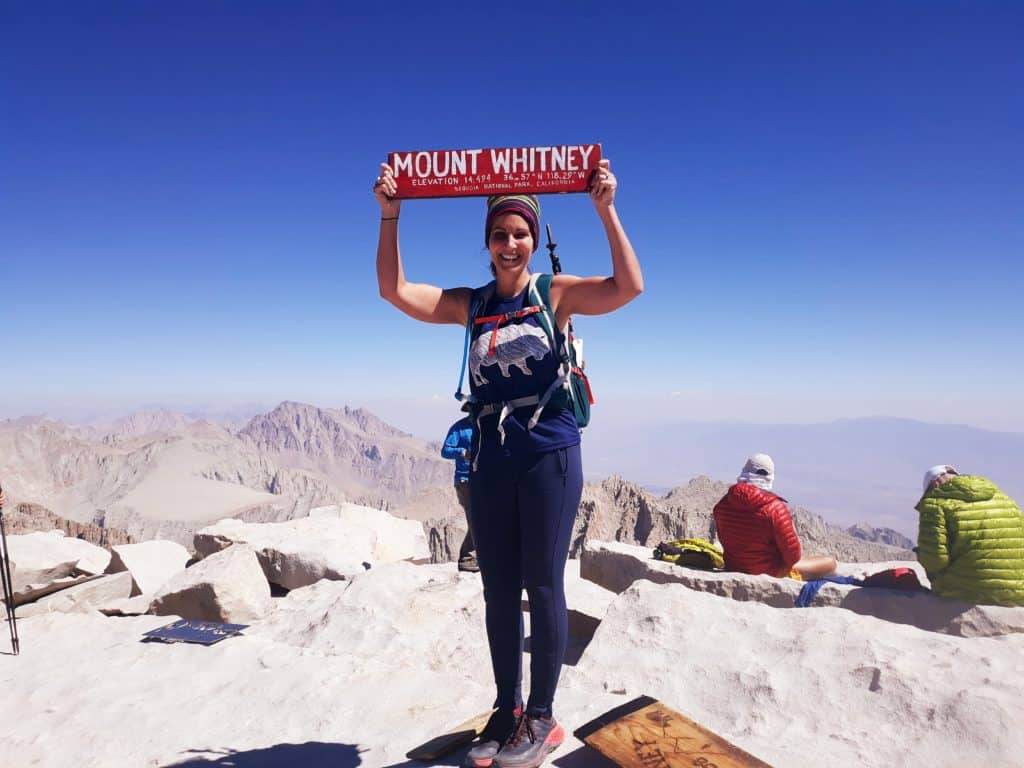
*WAIT!!! Don’t forget to download your own 16 Week Mt. Whitney Training Calendar HERE! If you only do one thing to help guarantee a successful summit, start here with a training calendar!
*Now that you’ve started your journey towards training for Mt Whitney, don’t forget to download your Mt Whitney gear checklist!
How Much Would 4 Months of Accountability and Coaching Mean to You?
Did you know that I offer 1:1 Coaching Services for the Mt. Whitney Hike?
Take a look below, and COMPLETE THIS FORM to get started today!
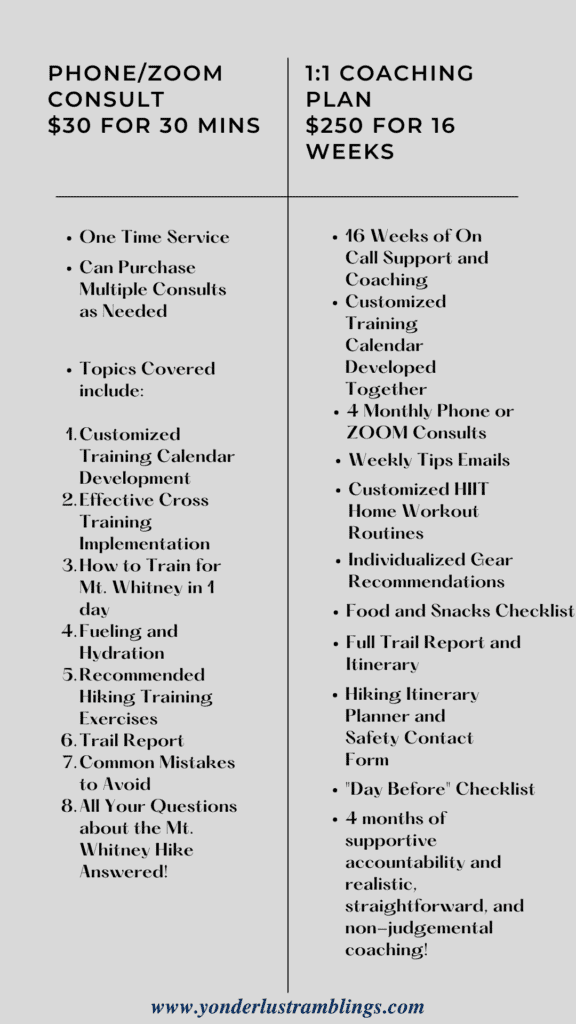
PIN for LATER!




